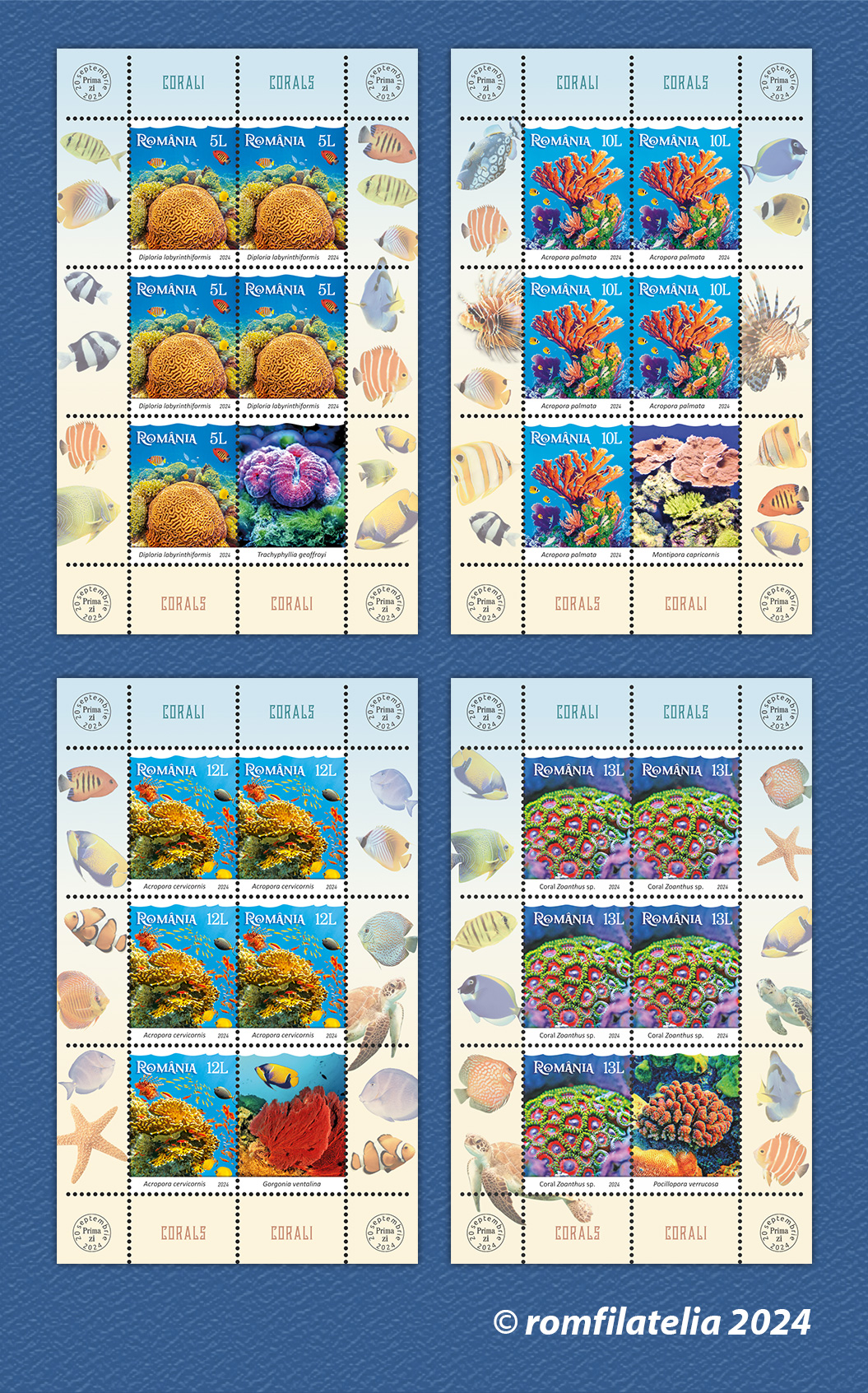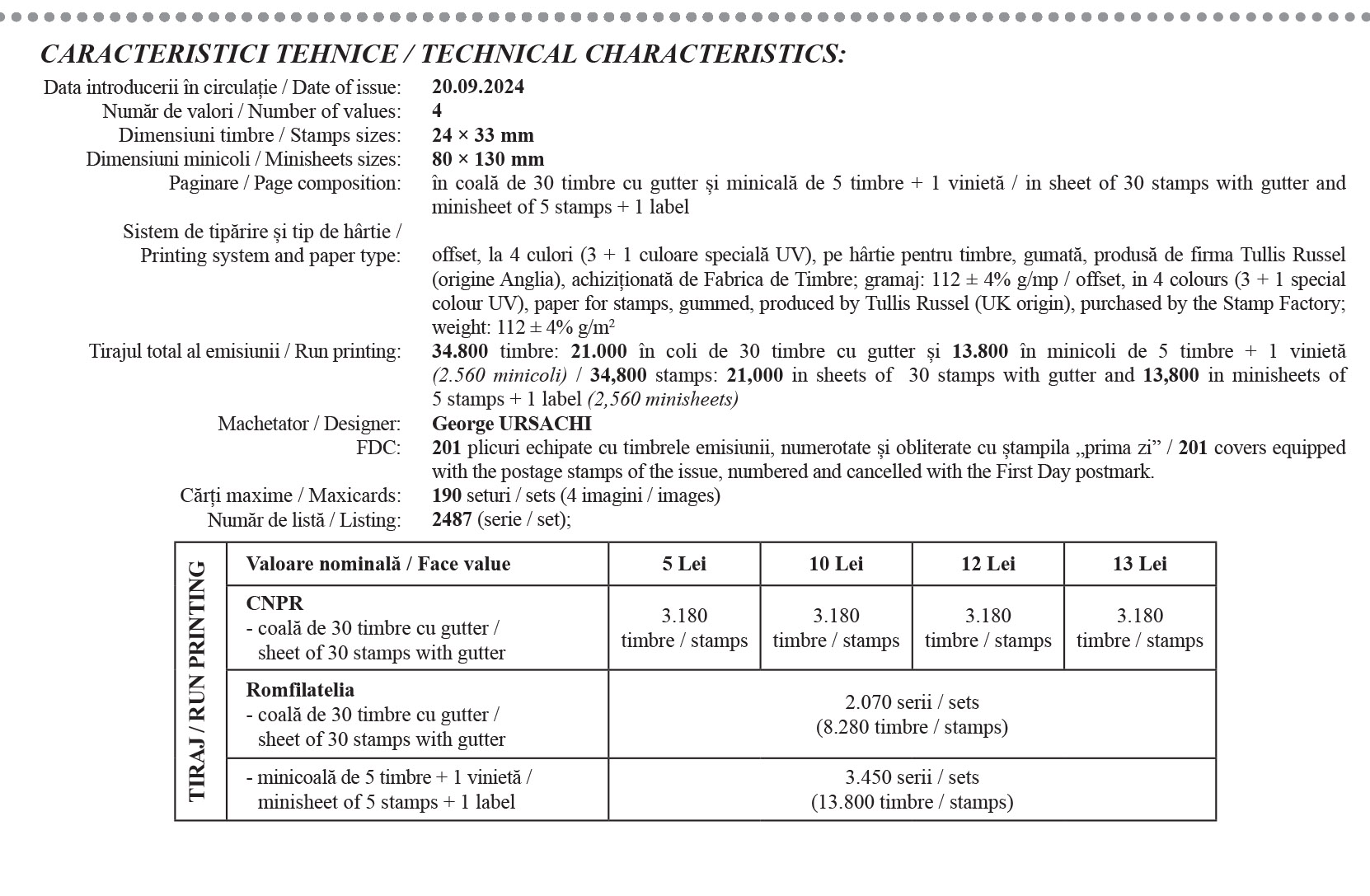 A postage stamp issue themed around Fauna will be released by Romfilatelia on Friday, September 20th this year, under the generic title Corals. The components of the issue include 4 postage stamps, a First Day Cover, and 4 maxicards for the pasionates of maximaphily.
A postage stamp issue themed around Fauna will be released by Romfilatelia on Friday, September 20th this year, under the generic title Corals. The components of the issue include 4 postage stamps, a First Day Cover, and 4 maxicards for the pasionates of maximaphily.
Corals belong to the family of marine invertebrates in the class Anthozoa, phylum Cnidaria. They live in compact colonies consisting of many polyps, joined together by calcareous channels. After the death of the polyps, another one is added to the old skeleton, forming what we know as a coral reef. The calcareous skeleton, or bead, is usually white or red and is used to make ornaments.
Corals secrete calcium carbonate, which materialized in the form of a skeletal cup, serves as a base for anchoring the polyps. Laterally connected polyps by tubes that are extensions of the gastrovascular cavities of the polyps multiply by asexual reproduction.
Coral colonies are found in the deep water, but reefs are only found in warm, clear and unpolluted waters, with a limit of depth equal to that to which the light penetrates, which provides photosynthesis for the algae that live in the tissues of the polyps and which provides their energy and partly food.
Coral polyps are usually active at night and feed on plankton and floating organic matter. Living victims are captured with paralyzing stinging cells.
Coral reefs (calcareous rocks formed by corals living in colonies in the waters of warm seas) can form a barrier located parallel to the shore, both at depths of a few meters and at depths of more than 20 meters. They represent bio-ecological systems, with a particularly important role in the process of formation of atolls or islands of coral origin in warm seas.
Coral colonies populate areas of different depths, gradually rising through the sedimentation of the skeletons towards the surface of the sea, forming anecosystem with marine animals or plants with which they live together.
The four stamps of the postage stamp issue reproduce four species listed under the names Diploria labyrinthiformis, Acropora palmata, Acropora cervicornis, Zoanthus sp.
Diploria labyrinthiformis (postage stamp with the face value of Lei 5) is found in the western Atlantic Ocean and the Caribbean Sea.
It is the only species of the genus Diploria. Brown, yellow or grey in colour, it lives at depths of about 50 cm. It can reach 2 m in diameter.
Acropora palmata (postage stamp with the face value of Lei 10), named for its shape and the moose horn coral, is widespread from southern Florida to the northern coasts of Venezuela. It lives at a depth of about 3.5 m, showing the colours yellow and brownish yellow. Its average length is 0.75 m.
Acropora cervicornis (postage stamp with the face value of Lei 12), species also known as the staghorn coral, is found in the Caribbean Sea, Mozambique, Mauritius, the Indian Ocean, the Great Barrier Reef of Australia. It lives up to depths of 20 m. Branches thick and straight, exceed 2 m. It comes in light brown, beige, green, blue and purple colours.
Zoanthus sp. (postage stamp with the face value of Lei 13) is the type found in many areas including the Gulf of Mexico, the eastern coasts of Brazil, the Indian Ocean, the coasts of Australia. It is also found in aquariums because it is easy to grow and is appreciated for its coloration. It is popularly called button polyps. Common colours are red, blue, green and purple.
Romfilatelia thanks Mr. Maxim-Jean Bâlcu, Ph.D. candidate, researcher at the Heritage Research Section of the „Grigore Antipa” National Museum of Natural History, for the specialist advice given to the development of this postage stamps issue.



